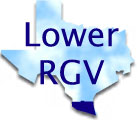| 1.0 | TRAVEL AND TRAFFIC MANAGEMENT |
| 1.7 | INCIDENT MANAGEMENT |
| 1.7.0 | ITS shall include an Incident Management (IM) function. Incident Management will identify incidents, formulate response actions, and support initiation and ongoing coordination of those response actions. Four major functions are provided, which are, (1) Incidents Identification, (2) Response Formulation, (3) Response Implementation, and (4) Predict Hazardous Conditions. |
| 1.7.1 | Incident Management shall provide an Incident Identification function to identify incidents. |
| 1.7.1.1 | The Incident Identification function shall include the capability to identify predicted incidents. |
| 1.7.1.1.1 | The Incident Identification function shall use information from the following types of sources, where available, to identify predicted incidents: |
| 1.7.1.1.1(a) | Traffic flow sensors. |
| 1.7.1.1.1(b) | Environmental sensors. |
| 1.7.1.1.1(c) | Public safety sources. |
| 1.7.1.1.1(d) | Media sources. |
| 1.7.1.1.1(e) | Weather information sources. |
| 1.7.1.1.1(f) | Transportation providers. |
| 1.7.1.1.1(g) | Sponsors of special events. |
| 1.7.1.1.1(h) | Hazardous condition prediction algorithms. |
| 1.7.1.1.2 | The Incident Identification function shall determine at least the following characteristics of each predicted incident: |
| 1.7.1.1.2(a) | Type (including Terrain Hazards). |
| 1.7.1.1.2(b) | Extent. |
| 1.7.1.1.2(c) | Severity. |
| 1.7.1.1.2(d) | Location. |
| 1.7.1.1.2(e) | Expected duration. |
| 1.7.1.1.3 | The Incident Identification function shall determine the expected traffic flow impact of each predicted incident. |
| 1.7.1.2 | The Incident Identification function shall include the capability to identify existing (both planned and unplanned) incidents. |
| 1.7.1.2.1 | The Incident Identification function shall use information from the following types of sources, where available, to identify existing incidents: |
| 1.7.1.2.1(a) | Traffic flow sensors. |
| 1.7.1.2.1(b) | Environmental sensors. |
| 1.7.1.2.1(c) | Public safety sources. |
| 1.7.1.2.1(d) | Media sources. |
| 1.7.1.2.1(e) | Weather information sources. |
| 1.7.1.2.1(f) | Transportation providers. |
| 1.7.1.2.1(g) | Travelers. |
| 1.7.1.2.2 | The Incident Identification function shall determine and continuously monitor at least the following characteristics of each existing incident: |
| 1.7.1.2.2(a) | Type (including Terrain Hazards). |
| 1.7.1.2.2(b) | Extent. |
| 1.7.1.2.2(c) | Severity. |
| 1.7.1.2.2(d) | Location. |
| 1.7.1.2.3 | The Incident Identification function shall determine and continuously monitor the current and expected traffic flow impact of each existing incident. |
| 1.7.2 | IM shall provide a Response Formulation function to formulate appropriate response actions to each identified incident and revise those actions when necessary. |
| 1.7.2.1 | The Response Formulation function shall propose and facilitate the appropriate scheduling of those predicted incidents that can be scheduled to minimize incident potential, incident impacts, and/or the resources required for incident management. |
| 1.7.3 | IM shall include a Response Implementation function to provide the services to implement a response coordinated with all appropriate agencies. |
| 1.7.3.2 | The Response Implementation function shall provide a link between Incident Management and all other user services necessary to implement incident response actions. |
| 1.7.4 | IM shall provide the capability to Predict Hazardous Conditions, including the time and location of hazardous conditions that may cause an incident. |
| 8.0 | MAINTENANCE AND CONSTRUCTION MANAGEMENT |
| 8.1 | MAINTENANCE AND CONSTRUCTION OPERATIONS |
| 8.1.0 | ITS shall provide Maintenance and Construction Operations (MCO) functions to support monitoring, operating, maintaining, improving and managing the physical condition of roadways, the associated infrastructure equipment, and the required resources. MCO shall focus on four major functions: 1) the Maintenance Vehicle Fleet Management function, to monitor and track locations and conditions of fleets of maintenance, construction, and specialized service vehicles; 2) the Roadway Management function, to monitor and forecast conditions and manage treatment of roadways during various travel conditions; 3) the Work Zone Management and Safety function, to support effective and efficient roadway operations during work zone activities; and 4) the Roadway Maintenance Conditions and Work Plan Dissemination function, to coordinate work plans and to communicate conditions. This User Service will utilize ITS systems and processes to support interchange of information among diverse groups of users, to improve efficiency and effectiveness of operational, maintenance, and managerial activities. |
| 8.1.3 | Maintenance and Construction Operations shall provide a Work Zone Management and Safety (WZMS) function, which provides support for the effectiveness, safety, and efficiency of roadway operations during all work zone activities. This function includes interactions among Traffic Managers, Supervisors, Dispatchers, Field Crews, Construction Crews, Public Safety Organizations, Information Service Providers, and Travelers. |
| 8.1.3.2 | WZMS shall support the management of data about work zones. |
| 8.1.3.2.4 | WZMS shall provide information on work zone activities to other agencies, including but not limited to: |
| 8.1.3.2.4(e) | Traffic management systems |
| 8.1.4 | Maintenance and Construction Operations shall provide a Roadway Maintenance Conditions and Work Plan Dissemination (RMCWPD) function to provide Intra- and Inter-agency coordination of work plans. This function includes interactions among Traffic Managers, Supervisors, Planning Agencies, Public Safety Organizations, and Information Service Providers. |
| 8.1.4.1 | RMCWPD shall coordinate information on planned maintenance and construction activities, including work zone information, and unplanned remediation activities, such as inclement weather responses, so that routing, scheduling, and resource allocation can be accomplished. |
| 8.1.4.2 | RMCWP shall support inter-agency coordination of response and scheduling of resources for significant events with broad impact, like natural disasters, major incidents, and large planned or seasonal events. |
| 8.1.4.3 | RMCWPD shall coordinate information with other transportation agencies, including but not limited to: |
| 8.1.4.3(d) | Traffic Management |
| | |












 Web Spinner Technology.
Web Spinner Technology.